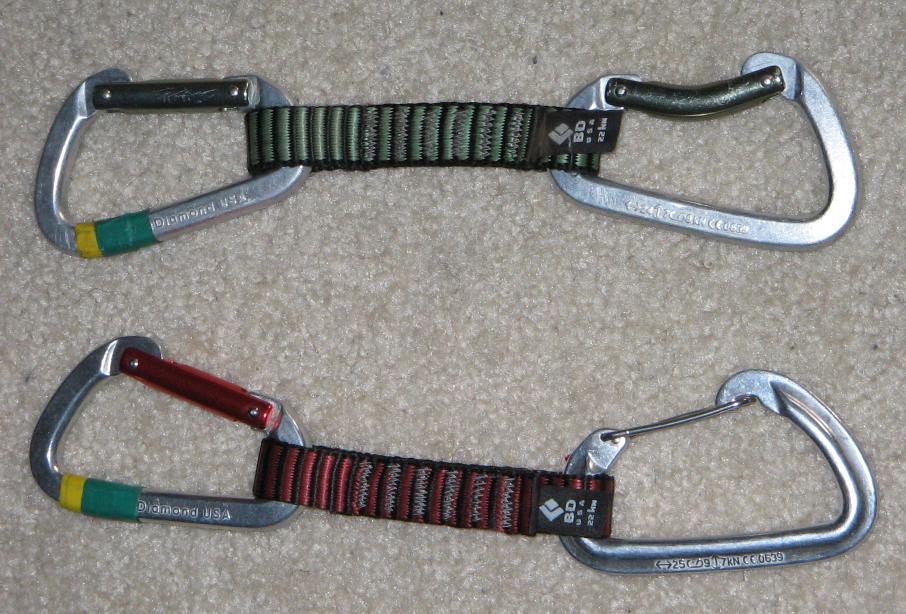Quickdraw on:
[Wikipedia]
[Google]
[Amazon]

 A quickdraw (also known as an extender) is a piece of
A quickdraw (also known as an extender) is a piece of
How to select Quickdraws for Climbing
* {{Climbing-nav Climbing equipment

 A quickdraw (also known as an extender) is a piece of
A quickdraw (also known as an extender) is a piece of climbing equipment
A wide range of equipment is used during rock or any other type of climbing that includes equipment commonly used to protect a climber against the consequences of a fall.
Rope, cord and webbing
Climbing ropes are typically of kernmantle c ...
used by rock and ice climbers to allow the climbing rope
A rope is a group of yarns, plies, fibres, or strands that are twisted or braided together into a larger and stronger form. Ropes have tensile strength and so can be used for dragging and lifting. Rope is thicker and stronger than similarl ...
to run freely through protection such as a bolt anchors or other traditional gear while leading
In typography, leading ( ) is the space between adjacent lines of type; the exact definition varies.
In hand typesetting, leading is the thin strips of lead (or aluminium) that were inserted between lines of type in the composing stick to incr ...
.
A quickdraw consists of two carabiner
A carabiner or karabiner () is a specialized type of shackle, a metal loop with a spring-loaded gate used to quickly and reversibly connect components, most notably in safety-critical systems. The word is a shortened form of ''Karabinerhaken'' ...
s connected by a semi-rigid material (sometimes called the "dogbone"). One carabiner has a straight gate and connects to an anchoring device. The other carabiner is for the climbing rope, and uses a bent gate. Quickdraws are manufactured with either a solid carabiner gate or a wire carabiner gate for its lighter weight.
Use
A quickdraw is a specific type of runner. Runners are used by rock and ice climbers to extend the distance between an anchoring device and the rope. A quickdraw is differentiated from a simple open loop of webbing with 2 carabiners on it by the following attributes: # The material that connects the 2 carabiners is semi-rigid. It is not as flexible as an open loop of webbing. This rigidity facilitates quicker clipping to an anchoring device. # The gate (on the carabiner that clips to a rope) is held in a specific orientation that facilitates quicker clipping to a rope. These two attributes differentiate a quickdraw from other types of runners. These two attributes are literally what makes this special type of runner "quick" to "draw". If either of these two elements is missing the runner is not a "quickdraw". The methods by which a quickdraw maintains gate orientation vary. The most popular method involves the use of an elastic polymer band around the outside of the point of connection between the carabiner and the semi-rigid material. The elastic band should only be installed on the rope-end, and not on the anchor end. The elastic band is not a load-bearing element, and the carabiner must pass through the dogbone to hold body weight. Incorrect assembly has led to at least one death. While historically the orientation of the gates varied, it is now generally recommended that both gates face the same direction, and that the quickdraw is clipped with both gates facing away from the climber's path. This lessens the chances of the carabiner getting "nose-hooked" and breaking, or of either carabiner unclipping, during a fall or due to rope drag.References
External links
How to select Quickdraws for Climbing
* {{Climbing-nav Climbing equipment